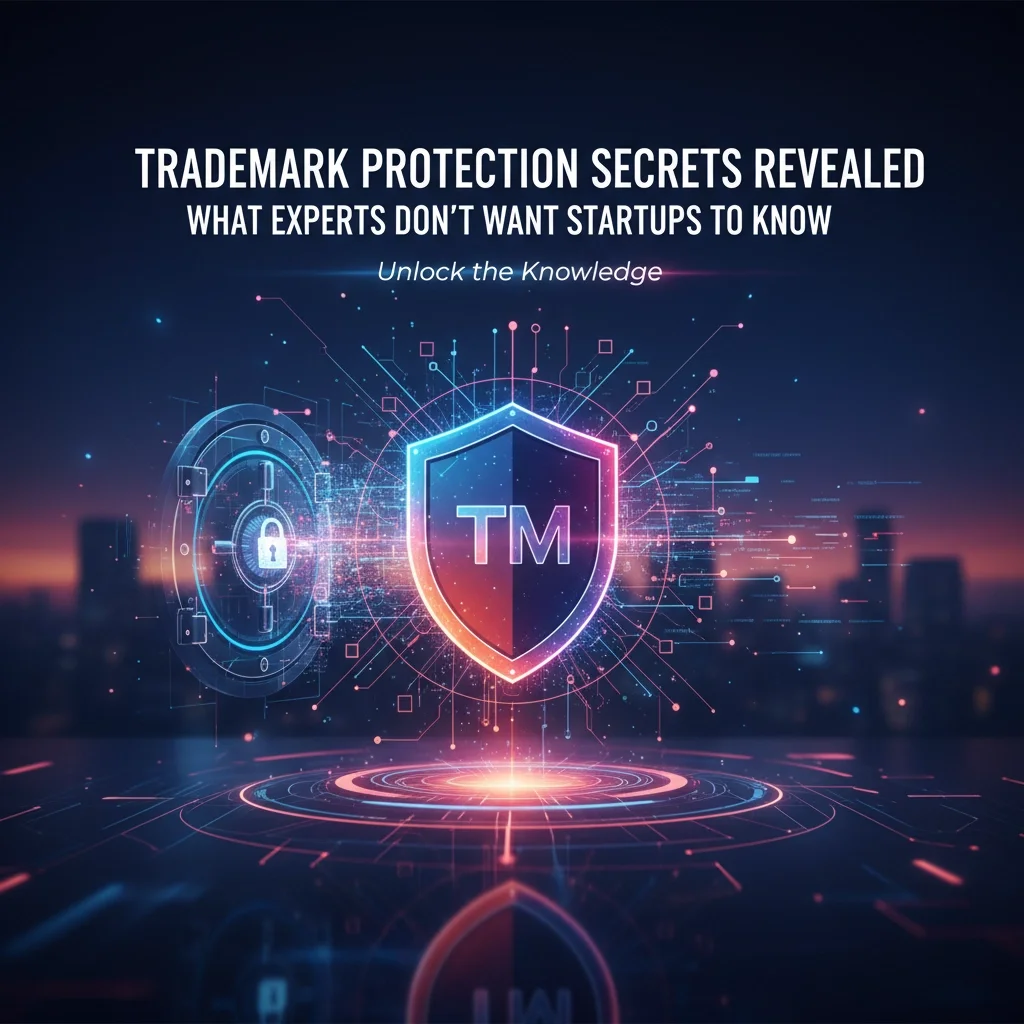Trademark Protection Secrets Revealed: What Experts Don't Want Startups to Know
The truth is, trademark "secrets" aren't really secrets at all. They're critical protection strategies that experienced attorneys use daily but that most startups completely ignore until it's too late. While you're focused on product development and customer acquisition, competitors could be quietly building cases that will force you to rebrand your entire business.
Here's what the trademark protection playbook actually looks like when you know the rules of the game.
Secret #1: File Your Intent-to-Use Application Before Anyone Knows You Exist
Most startups wait until they launch to think about trademark protection. This backwards approach costs businesses millions in rebranding expenses every year. Smart founders file intent-to-use (ITU) applications while their product is still in stealth mode.
An ITU application lets you claim trademark rights before you've sold a single product. You're essentially telling the USPTO, "I'm going to use this trademark in commerce within six months," which gives you first-to-file advantages that block competitors from claiming similar marks.
Here's how the timeline works: You file your ITU application, the USPTO examines it, publishes it in the Official Gazette, and if no one opposes it, you receive a Notice of Allowance. At that point, you have six months to start using the trademark commercially and file your Statement of Use. Need more time? You can request up to five consecutive six-month extensions.
This strategy protects your brand before competitors even know what you're building.
Secret #2: Your Trademark Search Needs to Go Beyond Google
The biggest mistake startups make is assuming a quick Google search and USPTO database check is enough. Professional trademark searches dig deeper because likelihood of confusion extends far beyond identical matches.
Your search strategy should include:
USPTO's Trademark Electronic Search System (TESS) for registered and pending marks
State trademark databases where local businesses might have common-law rights
Domain registrations that could indicate commercial use
Social media handles and business directories
Industry publications and trade journals
The USPTO will reject your application if there's likelihood of confusion with existing marks, even if they're not identical. A mark doesn't have to be registered to have legal rights either. Common-law trademark rights can develop through actual commercial use, which is why comprehensive searching matters.
Don't let a $100 basic search cost you a $50,000 rebranding project later.
Secret #3: DIY Trademark Applications Are Legal Malpractice on Yourself
Filing your own trademark application might save money upfront, but it's one of the most expensive shortcuts you can take. The application process involves dozens of technical decisions that will determine how broad your protection actually is.
Trademark protection only applies to the specific goods and services you identify in your application. Choose the wrong classification classes or use overly narrow descriptions, and you'll leave gaps that competitors can exploit. Use language that's too broad, and the USPTO will reject your application entirely.
Professional trademark attorneys understand how to:
Select the optimal Nice Classification classes for maximum protection
Draft goods and services descriptions that survive USPTO scrutiny
Respond to office actions that could kill your application
Handle opposition proceedings from existing trademark owners
Develop prosecution strategies for international filings
Think of trademark applications like surgery. You wouldn't operate on yourself to save money, so why would you perform legal surgery on your most valuable business asset?
Secret #4: Confidentiality Breaches Kill Trademark Rights Before You File
Startups constantly make this fatal mistake: they pitch investors, demo at trade shows, or post on social media before securing their intellectual property rights. Public disclosure can destroy patent rights and trade secrets before you've had a chance to file protection.
Every investor meeting, pitch competition, and trade show demo is a potential confidentiality breach. Once your innovative features or branding strategies become public knowledge, you lose the ability to claim them as trade secrets, and you might create prior art that blocks your own patent applications.
The protection strategy is straightforward but requires discipline:
File provisional patent applications before any public disclosure
Require signed NDAs before sharing confidential information
Limit public pitches to general concepts, not specific implementations
Document your invention dates with detailed records and witness signatures
For situations where NDAs aren't practical, file protection first or don't disclose the information at all. There's no such thing as "a little bit pregnant" with confidentiality breaches.
Secret #5: Trademark Registration Is Just the Beginning, Not the End
Getting your trademark registered feels like crossing the finish line, but it's actually just the starting gun. Active monitoring and enforcement determine whether your trademark rights have any real-world value.
Trademark rights operate on a "use it or lose it" principle. If you don't actively monitor for infringement and take action against unauthorized use, you risk losing your rights through abandonment or genericization. Think about how "kleenex" and "xerox" became generic terms because their owners didn't aggressively protect them.
Your ongoing trademark maintenance should include:
Professional monitoring services that scan for similar marks being filed
Regular marketplace surveillance for unauthorized use of your mark
Swift enforcement action against infringers through cease and desist letters
Renewal filings at the required intervals (years 5-6 and 9-10, then every 10 years)
Documentation of continuous commercial use in all registered classes
High-profile trademark disputes often involve companies that failed to monitor and enforce their rights consistently.
Secret #6: Generic Business Names Are Trademark Suicide
Choosing a descriptive or generic business name might seem like smart marketing, but it's trademark suicide. Words that merely describe your goods or services can't function as trademarks because they don't identify a unique source.
"Charlotte Web Design Services" will never be registerable as a trademark because every word describes the business. "Apple Computer," on the other hand, has nothing to do with computers, making it inherently distinctive and protectable.
The spectrum of trademark strength runs from:
Generic (unprotectable): "Computer Store" for computer sales
Descriptive (weak protection): "Fast Delivery" for courier services
Suggestive (moderate protection): "Netflix" suggests internet and movies
Arbitrary (strong protection): "Apple" for computers
Fanciful (strongest protection): "Kodak" is a completely invented word
Major rebranding decisions often happen because companies realize their original names were too generic to protect effectively.
Secret #7: International Filing Strategy Can Make or Break Global Expansion
U.S. trademark registration only protects you in the United States. If you have any plans for international expansion, your filing strategy needs to account for global protection from day one.
Most countries operate on a "first-to-file" system, meaning whoever files first owns the trademark rights, regardless of who used it first. This creates a race condition where trademark squatters can file your marks in foreign countries before you do, then demand payment for the rights you thought you owned.
Smart international trademark strategy involves:
Filing in key markets before product launch
Using the Madrid Protocol for streamlined multi-country filing
Understanding local use requirements and renewal deadlines
Partnering with qualified foreign attorneys in each jurisdiction
The cost of international filing pales in comparison to the cost of being locked out of major markets or paying trademark ransom to squatters.
The Real Secret: Most "Secrets" Are Just Good Legal Hygiene
The dirty secret about trademark protection "secrets" is that they're not actually secrets. They're standard practices that experienced business attorneys implement routinely, but that most startups skip because they seem expensive or complicated.
Strategic founders understand that legal protection isn't an expense but an investment in their company's most valuable assets. Every day you operate without proper trademark protection is another day competitors can study your branding strategy and file applications to block your expansion.
The companies that thrive long-term are the ones that treat intellectual property protection as seriously as they treat product development and customer acquisition. Because at the end of the day, if you can't protect what makes your business unique, you don't really own a business at all.





